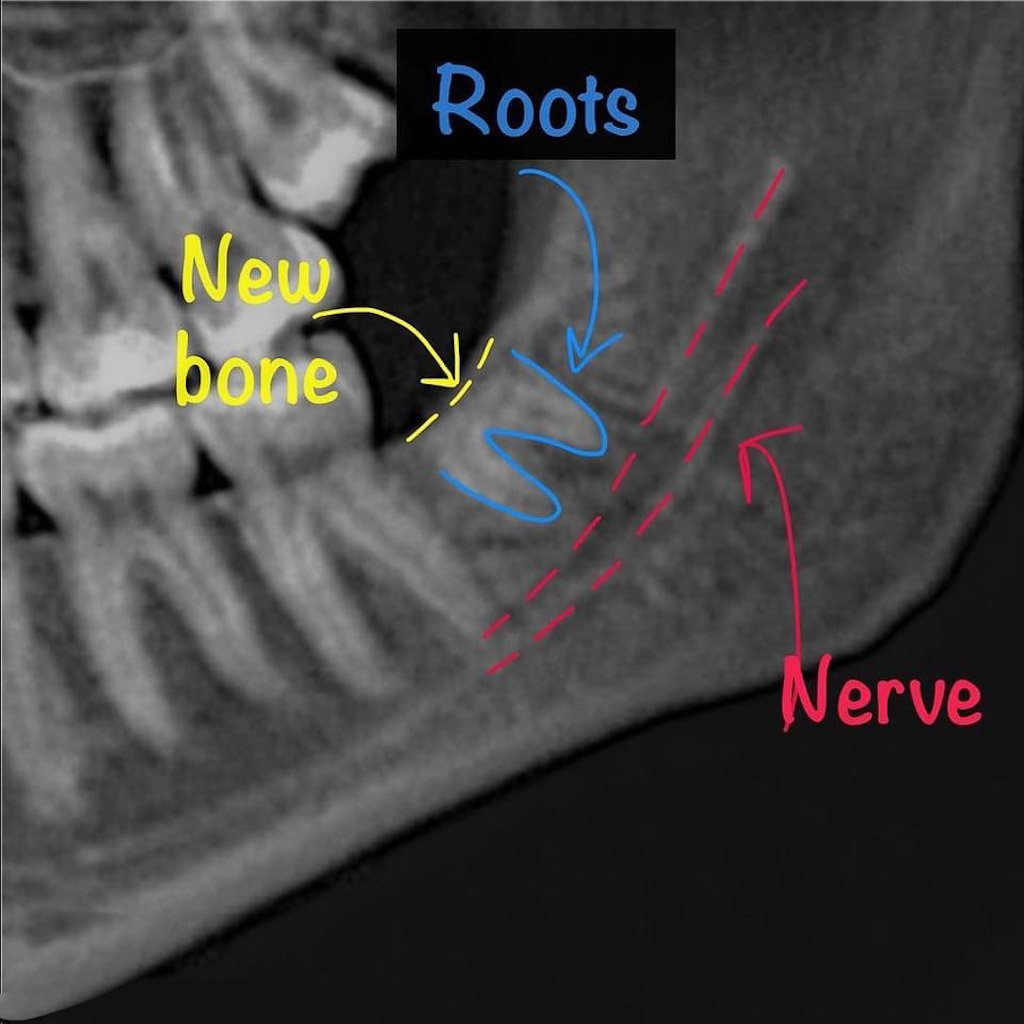Coronectomy
What is a coronectomy?
Before I answer the “what,” let me first address the “why.”
As an oral surgeon, taking out impacted (stuck/buried/sideways) wisdom teeth is one of the most common procedures that I perform. It's one of the core procedures that all oral surgeons do. And yet I still see countless patients who have had two or three of their wisdom teeth removed, but they still have one wisdom tooth left in their jaw, because their doctor told them that it was too close to the nerve and should not be removed.
But this is not completely right. Well, the wisdom tooth roots may very well be too close to the nerve in the jaw. But it still needs to be removed, for all of the reasons wisdom teeth need to be removed (the lifelong risks of severe infections and pathology, as well as damage to the neighboring second molar teeth).
This wisdom tooth that you see here in the x-ray above is impacted (in a non-functional position) and very close to the nerve. Notice how its roots are straddling the nerve canal just below it. That is a nerve that gives feeling to the lower lip, chin, and lower teeth. And yes, if this tooth is extracted carelessly without regard for this nerve, the nerve can be damaged, resulting in permanent numbness of these areas.
But the tooth still needs to be removed, and so to minimize the risk to the nerve, a coronectomy is warranted. This word can be broken down into:
Corona = crown, or top (the crown of a tooth simply refers to the part of the tooth that is above the roots)
Ectomy = removal (usually surgical)
A coronectomy means just removing the crown of the tooth, and leaving the roots in place. This procedure has been a total game changer in the oral and maxillofacial surgery world. I can safely remove the crown of the tooth (which is actually the part that causes most, if not all the problems down the road), and leave the roots in peace. Look at the post-coronectomy x-ray above, showing the roots still in place but the crown has been removed. The surgical site is closed with sutures. Patients generally do not notice a difference in recovery whether they had a coronectomy or the entire tooth extracted. And the complication rate after coronectomy is very low, as long as the tooth was not infected in the first place.
Then, something amazing happens over the next two years. The roots migrate upward, AWAY from the nerve. See the final x-ray below, showing the same area two years later. The roots have migrated upwards in the bone, with a clear separation between the roots and the nerve. Usually the root remnants don't actually erupt, because there is a layer of bone that forms above them, blocking eruption. But, if they ever did erupt, or cause any sort of problem, they could be removed easily, because they are now away from the nerve! This hardly ever happens; 99% of the time the roots just stay there quietly, you'd never know they were there.
If your dentist or oral surgeon tells you that your wisdom tooth cannot be extracted due to its proximity to the nerve, I invite you to suggest that a coronectomy be performed. If you would like to come in for 3D imaging or to discuss whether coronectomy is the correct procedure for you, don’t hesitate to give our office a call.



